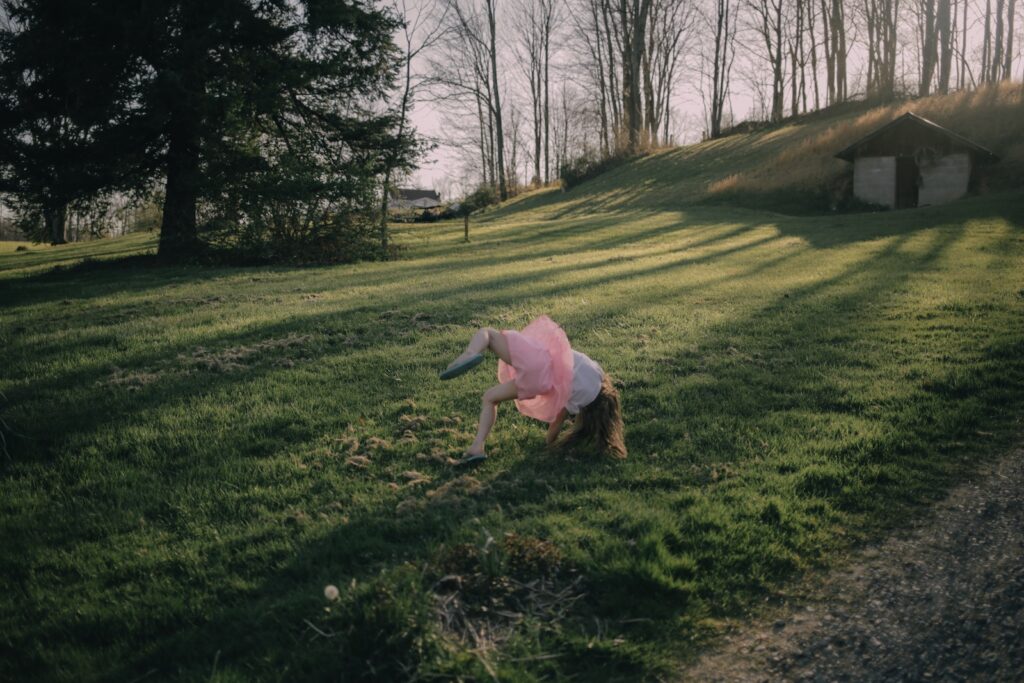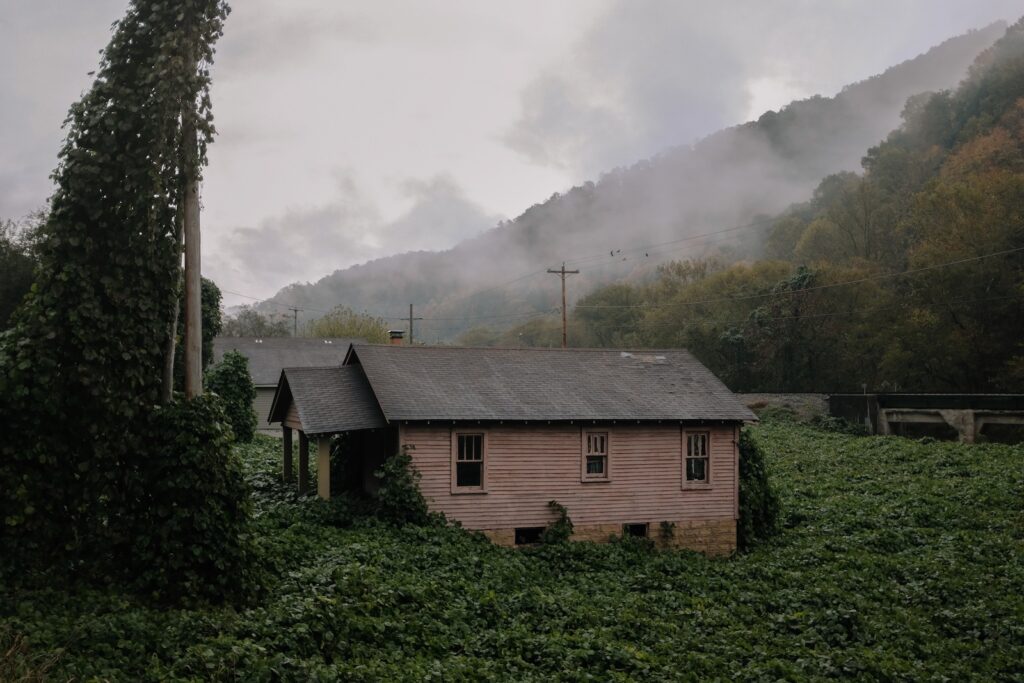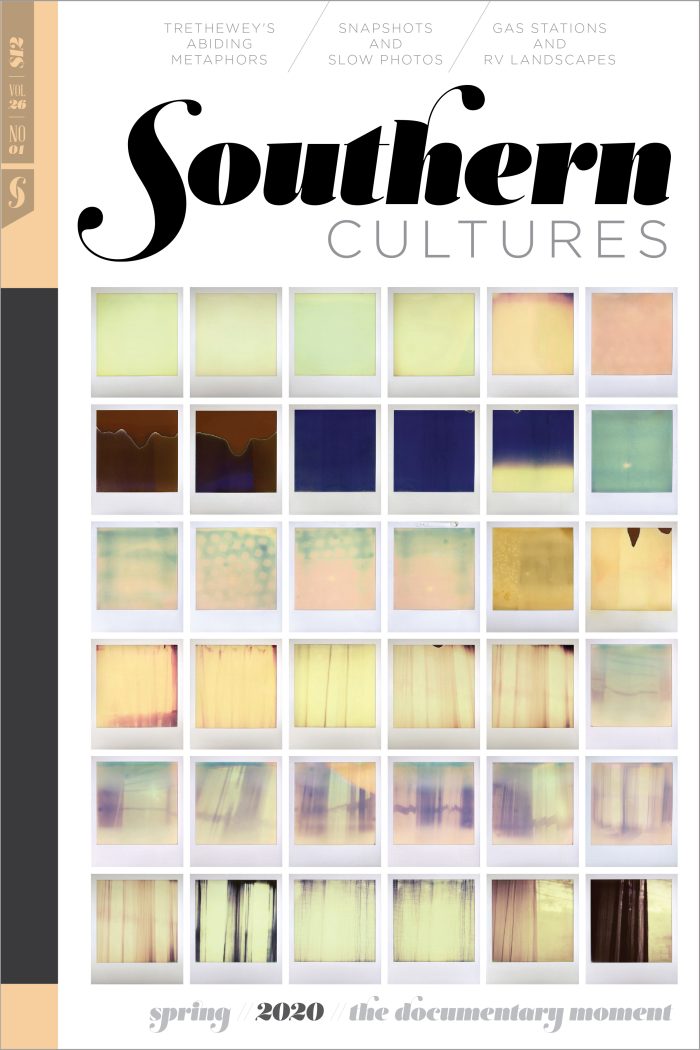“I have skin in the game. I live here. Appalachians hold me accountable at the grocery store, and that makes the work, and me, more honest.”
The week of March 13, 2017, was like any other week for me. I was hustling to get access to a tense courtroom for my feature documentary Recovery Boys and working remotely with Los Angeles–based composer Daniel Hart on the music for my short film Heroin(e). Both films explore the opioid crisis in Appalachia. I’m a documentary filmmaker living in West Virginia, a state without a formal filmmaking community, and the feeling of straddling geographies is a familiar one. The handful of us that do document the state often do so alone and with few resources.1
During that week in March 2017, I stumbled across a New York Times article titled “Left-Leaning Documentary World Seeks Right-Wing Perspective” that was being shared widely among my larger documentary community in New York City and Los Angeles. As a filmmaker living in a red state, the title of the article made me cringe. It felt like an oversimplification and a misunderstanding of underserved communities. Why seek a “right-wing perspective” when people are ready to share their nuanced stories from lesser-seen places? The assumption that all films made in and about red states must be steeped in the politics of the Republican Party is reductive. It places complex life philosophies into neat boxes, allowing people to write off my diverse home of Appalachia as “Trump Country” without looking deeper.2
The New York Times article noted that there is a shortage of red state filmmakers, which is true. The nerve center for documentary filmmaking is New York City, specifically Brooklyn. That’s not to say that many docs are made in Brooklyn, but by people who have planted themselves there. In the article, one of these filmmakers, Dan Cogan—an Academy Award–winning producer and executive producer with over eighty credits, including Icarus, Detropia, and Won’t You Be My Neighbor, and cofounder of the film fund Impact Partners—comments on the predominance of left-wing documentarians. He is quoted saying that, if there were a red state filmmaker with a red state viewpoint, he would want to make a movie with that person. Cogan’s comment elicited a response from West Virginia–born filmmaker Mari-Lynn C. Evans, who has been making films about Appalachia since 2005. Evans joked, “It’s fabulous to know that the outside world has finally heard about us hillbillies and want [sic] to come down and help us.”3
Evans’s biting remarks hit home. It’s a sentiment shared by many of us who were born and raised in rural and remote places, in “flyover country.” We hail from the land where well-meaning visitors come to fix us. I meet these people at cocktail parties in well-lit and well-funded places. They tell me about how they spent a summer fixing things, like homes and people, where I’m from; “App-a-lay-sha,” they say. I want to tell them that just moments after they leave the mountains, that new linoleum that they are patting themselves on the back for laying is often lifted, rolled up, and sold. People need jobs, opportunity, and money, not new floors.

We rarely value diversity of experience, socioeconomics, education, or geography in the documentary field. We mostly, and for good reason, focus on closing gender and racial gaps. Thus, Dan Cogan’s theory on why there are fewer documentary filmmakers from, or living in, red states was unsurprising: “People who tend to be sensitive to the experiences of others have a more open and broad perspective and tend to be more progressive as a result,” Cogan said. “And artists are very empathetic people.” Such sweeping statements presume that empathy (or a lack thereof) and political allegiance are directly correlated. That empathy is owned by one party, one set of beliefs, and one type of person. That all Trump voters lack empathy for their fellow citizens, and, extending that further, that everyone living in a state where Donald Trump claimed victory also supports him. Cogan’s statement also suggests that artists have good intentions, which is a false generalization. Artists are as complicated as any other group of people, some selfish, some self-effacing, and everything in between. The simple fact is empathy crosses state and party lines. If we can’t accept that, we help make perceived divisions a reality.
The article signaled a moment where the powerful gatekeepers were considering how to bridge the divide—a plan that is doomed if it starts with the premise that we are alien to one another not because of perceptions but because of values. (It is worth noting that, since the publication of the 2017 New York Times article, industry leaders have made no meaningful progress toward seeking out and capturing voices outside the nation’s major urban centers.) These divides are not intractable. Empathy is not blue or red; it’s purple, or rainbow; it has no affiliation. I wear purple myself as I untangle the oversimplified narratives we tell ourselves about fellow Americans. I can tell you that stereotypes about my home are not wholly untrue, but my problem lies in the fact that they are not wholly true either. To many, Appalachia is a place to pity, but it is a place full of contradictions the same as any American community—a hopeless place and a place full of hope, depending on which direction you point the camera. Those contradictions coexist. It’s easy to write off those whose worldview and experiences differ from our own as old-fashioned bigots or entitled radicals, but we don’t have to choose sides and declare whose truth is truer. Instead, we must find the time and patience to meet someone where they are, pursue deeper conversations so we can find common ground.
Dorothea Lange was able to straddle this line generously. Known for finding dignity in complicated situations, she showed us humor and beauty alongside crisis. While documenting the Great Depression, she wrote of her subjects, “Their roots were all torn out. The only background they had was a background of utter poverty. It’s very hard to photograph a proud man against a background like that, because it doesn’t show what he’s proud about. I had to get my camera to register the things about those people that were more important than how poor they were—their pride, their strength, their spirit.” For Lange, it was about seeing the whole human—the spirit—in the midst of hardship. And it is this difficult task that documentarians must practice daily.4
More people are watching documentaries than ever before. Ten years ago, when I first started making documentaries for public consumption, the only person who saw my films was my mom. Now streaming giants, including Netflix, Hulu, Amazon, hbo, and Showtime, fund and distribute heaps of short-form and feature-length documentaries, as well as episodic documentaries. The audience is growing too: in 2016, 73 percent of Netflix subscribers watched at least one documentary. It’s not uncommon for me to be on an airplane next to someone who has seen one of my films on Netflix. But a question fundamental to documentary work persists: who can tell whose story? Concerns about power and access spur debates over ethics. Whose approach is more legitimate—that of the insider, born and bred within the community, with backroads tattooed on her heart and intimate knowledge of families in the holler? Or that of the outsider, who brings probing questions and critiques that communities in the thick of it may be too close to see?5
Perhaps more pertinent is the question: whose story should be told? The role of advocacy in documentary work has a long and hallowed tradition. Films that document the lives of the vulnerable and disenfranchised seek to draw attention to our problems, engender empathy, and inspire communities to pursue solutions. In my work, rather than focusing solely on struggle (depopulation in rural America with Hollow and the opioid crisis with Heroin(e) and Recovery Boys), I seek to find citizens who exhibit the resilience and agency to make the world better but often don’t have the resources to see transformation through. I take this approach because I have skin in the game. I live here. Appalachians hold me accountable at the grocery store, and that makes the work, and me, more honest. And in a crisis, like the opioid epidemic, when the mugshots and obituaries of middle school classmates start piling up, I need hope. So I set forth with my camera to find it. And it’s within that journey of finding hope that I can tell you that empathy exists outside of party politics.6

The stories worth telling are not “left-wing” or “right-wing” ones but those that allow us to appear as the puzzling humans we actually are. We could all stand to be reminded of this, and there is an opportunity for documentarians to light the path. I have tried to walk that line in Heroin(e), which presents its share of liberal and conservative beliefs. Jan Rader, the first responder featured in the film, can be both a member of the lgbtq community and a Christian. Community activist Necia Freeman can be both a faithful Baptist and a diehard feminist. Judge Patricia Keller can be both a tough-nosed drug court judge and the only maternal figure some who are struggling with addiction ever have. The three women featured in the film couldn’t be more different on the surface, but they are fighting the same battle. They may see different paths to getting there, but they all respect each other’s fight and don’t pick apart the differences. Communities of very different geographic locations, socioeconomic statuses, races, politics, and cultures have hosted film screenings of Heroin(e), able to hold the opposing forces of destruction and hope through the actions of three women on the frontlines. While there are no obvious villains in the film, there are heroes.
And I sit comfortably in the gray spaces too—insider, outsider, right, left—as I am both a daughter and a stranger to my home region. Raised in Appalachia, gone for some years, and back to find a renewed connection, I report from the places that raised me. Editors in New York City and producers in Hollywood call me to “pick my brain” and make sure they’re not falling into a snake pit of stereotypes and clichés when they come to tell our and their story. Some hope that I can make sense of a region often perceived as mystical. I check all their boxes. Born in Southwest Virginia, raised in the coalfields of West Virginia. A daughter, granddaughter, and sister of coal miners. Ninth generation white Appalachian. I left for some formal education, got myself some letters of the alphabet (bs, mfa) and some awards, and I came back. I actually live here. I don’t really have a West Virginia accent anymore, which saddens me, but it also makes me more acceptable on a nationally broadcasted tv show or at a university podium.
On these calls with strangers, I am often the bridge between our perceived worlds, carrying knowledge from both and trying to make sense of it all. I am in a constant push and pull to figure out where I can be most useful. I am asking questions in hopes of finding answers that will make others understand how the place I’m from does matter. Like the coal and timber industries, the storytelling industry is extractive. Because so many filmmakers are based in big cities, rural parts of the country are frequently reduced to stereotype and generalization. Being rooted in Appalachia allows me to know places that are often overlooked or caricatured. By bringing attention to these places, I strive to push my industry to practice greater respect for and responsibility toward communities of all types.
It seems that West Virginia only makes the headlines for tragedies and disasters: flooding, mine explosions, racist comments, Nazi salutes among cadets, overdoses. As the director of two documentaries about the opioid crisis, I sometimes fear I am contributing to those negative perceptions. I often feel I am also for sale. But the fact is, our lives in Appalachia are much like everyone else’s. Not marked by daily tragedy, but quite mundane. Most days, the highlight of my day is getting my mail.
In the field, I spend hours not speaking, contorting my body into a shape that will let me keep my handheld camera still for one hour. Photos of me in the field show a squatting and wadded-up person. So much of the rest of the job is eye contact and one-on-one listening without the camera. Sometimes, because of our close relationships, people forget to ignore me. My response is always, “I’m not here right now.” But on the other hand, because of that relationship, they are more comfortable with me in moments of tension, stress, and conflict. It’s a give-and-take.
We need stories acknowledging that empathy and sensitivity are part of every community and exhibited everywhere. This new documentary moment comes with an important call for more storytellers to return to the places that raised them with new beliefs from the places they’ve been and show us both insider and outsider views. Show us the whole human. It is precisely that rootedness that will bring our committed documentarians to broader, more generous truths, ones crucial to a healthy, functioning democracy, messy though ours might be.
Elaine McMillion Sheldon is an Academy Award–nominated and Emmy and Peabody Award–winning documentary filmmaker based in Appalachia. She is the director of two Netflix Original Documentaries—Heroin(e) and Recovery Boys—that explore America’s opioid crisis. She was named a USA Fellow by United States Artists, and one of the “25 New Faces of Independent Film” by Filmmaker Magazine.
Header image: West Side, Charleston, West Virginia. All photos by Elaine McMillion Sheldon.
NOTES:
- Recovery Boys, directed by Elaine McMillion Sheldon (Charleston, WV: Requisite Media, 2018), netflix.com/recoveryboys; Heroin(e), directed by Elaine McMillion Sheldon (Charleston, WV: Requisite Media, 2017), netflix.com/heroine.
- John Anderson, “Left-Leaning Documentary World Seeks Right-Wing Perspective,” New York Times, March 17, 2017, https://www.nytimes.com/2017/03/17/movies/left-leaning-documentary-world-seeks-right-wing-perspective.html.
- Anderson, “Left-Leaning Documentary World.”
- Dorothea Lange, quoted in Elizabeth Partridge, Dorothea Lange: Grab a Hunk of Lightning (San Francisco: Chronicle Books, 2013), 76.
- For discussions on the contemporary popularity of documentary films, see Charlie Lyne et al., “From Weiner to Making a Murderer: This Is the Golden Age of Documentaries,” Guardian, November 14, 2016, https://www.theguardian.com/film/2016/nov/14/golden-age-of-documentaries-michael-moore-amy-making-a-murderer; Nathan McAlone, “Over 68 Million People Watched Documentaries on Netflix in 2016—and It’s Helping Them Have a Big Impact,” Business Insider, March 10, 2017, https://www.businessinsider.com/netflix-is-a-documentary-powerhouse-heres-why-2017-3; and Travis Clark, “2018 Was One of the Best Years Ever for Documentaries—4 of Which Ruled the Box Office and Blew Away Critics,” Business Insider, November 28, 2018, https://www.businessinsider.com/documentaries-at-box-office-2018-wont-you-be-my-neighbor-rbg-2018-11.
- Hollow: An Interactive Documentary, directed by Elaine McMillion Sheldon (Boston, MA: Hollow Interactive, 2013), DVD. See hollowdocumentary.com for more information.


